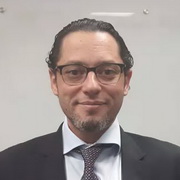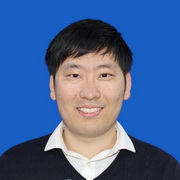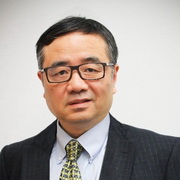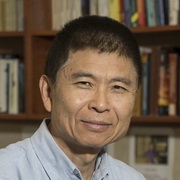Sustainability is the ability of human civilization to constantly exist and flourish together with our planet and ecosphere. Among all paths towards sustainability, technological advancement is the most promising one. Here at PEER, we endeavor to contribute to our sustainable future through facilitating the realization and commercialization of technology from scientific knowledge.
Energy Efficiency
Flow Assurance
Enormous amount of fluids is transported in pipes across the globe, including water, oil, natural gas, etc. This process consumes approximately 10% of the global electricity energy. However, since the pipeline transportation is mostly in the turbulent flow regime, a significant amount of energy was dissipated as the kinetic energy is converted into internal energy by viscous shear stress. Drag reducing additives such as polymers and surfactants, when injecting just a few ppm, can help to suppress the growth of turbulent eddies through the adsorption of energy released by the breakdown of the lamellar layer. As a result, drag reduction (DR) technology can reduce friction of up to 90%. This greatly saves energy in pipeline transportation and ease the energy crisis in nowadays. Currently, DR technology have found extensive use in applications such as the transportation of crude oil, suspensions and slurries, district heating and cooling, firefighting, oil well fracturing operations, hydro-transport of solids and biomedical fields.
Resource Extraction
Resource extractions from subsurface reserves are always of utmost importance to sustain lives of humans. Nowadays, petroleum remains the major energy sources to lubricate our daily life, yet, the long-term sustainability of petroleum supplies and the associated environmental strains on their extraction and usages have continuously raised public and industrial concerns. Whereas oil and natural gas continuously predominate our energy supplies, an urgent demand for advanced technologies is present to extract petroleum resources from subsurface regions in an environment-benign and cost-effective manner. Therefore, the development of advanced process and innovative materials for improving petroleum productions while minimizing environmental impacts has been one of PEER’s main objectives for the past two decades. Through successfully conducting a number of government-funded R&D projects and hosting several Joint Industrial Projects (JIP) with major energy companies, we have advanced many game-changing technologies and processes to improve our oil production efficiency and production sustainability in the following two aspects: (1) systematic laboratory development and evaluation protocols for process design, material screening and fluid characterization; (2) innovative materials and chemicals for drilling, completion, well stimulation, and enhanced oil recovery (EOR) under harsh reservoir environments.
Subterranean Simulation
It is essential to understand and characterize the subsurface rock formations and their response to the fluid flow in many areas of applications, such as, 1) evaluation of environmental impact of fluid additives, 2) prediction of pollution migration, 3) risk assessment for induced seismicity in hydraulic fracturing, 4) carbon dioxide sequestration, and 5) enhanced geothermal extraction. The challenge is that the subsurface medium is never a uniform material. Due to the periodic sediment deposition, compaction, weathering, and tectonic activities, the subsurface medium is heterogeneous, anisotropic, with various barriers and fast passages for the fluid flow within. It strongly controls the flow behavior, yet is difficult to be characterized with limited direct or indirect measurements.
At PEER, we lead the development of numerical simulation models for subsurface fluid flow subject to non-Newtonian dynamics, contaminations, biodegradable chemicals, rheological alterations, and fluid-rock interactions. Advanced chemical reaction kinetics, lab experiments on core flooding, numerical simulation of fluid flow and solute transport, and machine learning techniques are integrated in solving the complicated flow behavior.
The established and calibrated numerical fluid flow models are used to characterize subsurface medium and important fluid-rock interaction properties by history-matching techniques. Data collected from various sources, such as well logging, geostatistics, production rate history, seismic surveys, gas isotope monitoring, are assimilated while iteratively updating the models. The spatial variation of rock and dynamic properties is quantified during the process accompanied by the assessment of uncertainties.
Atom Economy
Methane Conversion
Natural gas, which is composed primarily of methane, is one of the most abundant, low-cost, hydrocarbon-based feedstocks available. Apart from the surging production of shale gas in the US, a significant amount of methane is also found in association with the petroleum production, known as the “associated gas” or “stranded gas”. Due to the challenges in efficient conversion of methane to higher value and/or more transportable chemicals, most of the associated gas is directly vented or flared. In 2017, The U.S. alone has vented or flared over 235 billion cubic feet of natural gas. Not only is it an enormous waste but also it contributes to the increasing greenhouse effect, since methane is 84 times more potent than carbon dioxide in the same amount. Currently, the conversion of stranded natural gas into easily transportable and useful liquids is perceived and regarded as the “Holy Grail” in the chemical industry. Here at PEER, two technologies are being developed to tackle this grand challenge, namely (1) converting methane into ethylene assisted by an oxygen-conducting solid oxide fuel cell (SOFC) device and (2) photon-efficient methane sulfohalogenation chemistry.
Value-added Chemicals
At PEER, we study and develop new reactions and pathways to solve a variety of problems in organic synthesis and energy conversion by using transition metal catalysis. Currently we focus on conducting advanced research in the field of sustainable energy such as small molecule activation and making valuable chemicals from renewable sources. i) Small molecules activation. At PEER we seek to develop new and efficient homogeneous catalysts for converting abundant small molecules, such as N2, CO2 and CH4, into valuable chemicals, such as ammonia and methanol. ii) Make valuable chemicals from renewable feedstocks. Alpha-olefins are straight-chain hydrocarbons characterized by a double bond in the terminal position and those alpha-olefins are very important chemical intermediates for the production of polymer and surfactant. For example, 1-hexene and 1-octene are vital monomers in the production of high-density polyethylene (HDPE), linear low-density polyethylene (LLDPE), and poly alpha olefin (PAO). Majority of those alpha-olefins are commercially produced from fossil feedstock, while our institute focuses on making those chemicals by utilization of renewable resources.
Biosynthesis
Considered a green and sustainable way to generate complex chemicals, biosynthesis is a multi-step, enzyme-catalyzed process where substrates are converted into more complex products in living organisms. Currently, the biosynthetic research at PEER focuses on the following areas:
(1) Better understand the molecular genetics and optimize the process of biosurfactants synthesis in P. aeruginosa and Bacillus subtilis. Two biosurfactants produced by those two bacteria strains, rhamnolipid and surfactin, are both controlled by two-way quorum sensing mechanism. We have successfully produced rhamnolipid in heterologous hosts by cloning the necessary genes onto over-expressing plasmids and are studying the possibilities to genetically engineer high-potent bacteria stains that can produce cost-effective biosurfactants.
(2) Gain the fundamental scientific understanding of CH4 generation by methanogenic bacteria at thermophilic conditions.
(3) Study how CO2 reduction occurs and how CH4 is generated by methanogenic bacteria.
Our interests have been on an uncommon but well documented bio-methanogenesis (4H2 + CO2 → CH4 + 2H2O + ATP). This process is also believed to be a strictly anaerobic process, where the H2 is supplied from a fermentation reaction by a different bacterial group (interspecies hydrogen transfer mechanism). Uncover the mechanisms of this methanogenic process will leads us to the new methods of carbon sequestration.
Environmental Protection
Water Treatment
Water is a vital commodity yet a scarce resource. Ensuring sustainable water supplies is essential to health, environment, and long-term social and economic development. Wastewater is a critical component of the water cycle. How wastewater is treated is key to ensuring safe and sufficient water supplies. The growing global population and increasing pollution exacerbates the complexed wastewater problems. The opportunities from exploiting wastewater as a resource are enormous. PEER Institute is dedicated in developing new technologies and solutions to tackle the most challenging wastewater problems. Currently, we are involved in the following projects:
(1) Forward Osmosis for the Desalination of Wastewater with Ultrahigh Salinity: In recent years, the forward osmosis (FO) process, an emerging membrane separation technology, has become a major competitor in the field of water treatment, especially desalination, against traditional technologies like reverse osmosis (RO) and mechanical vapor compression (MVC). At PEER, we are striving to develop FO technologies to increase water recovery percentage and reduce energy consumption. The two major areas that we are focusing on are membrane performance optimization and draw solution innovation. With these technological challenges addressed, FO is envisioned to be the ideal technology for treating produced water in the future.
(2) Next Generation of Polymer Flocculants for Special Wastewaters: Special wastewaters, such as those generated by textile industry, are one of the most polluted wastewaters because it contains a complex mixture of soluble contaminants that are difficult to remove via traditional techniques. Thanks to our expertise in polymer science, we are able to develop a new series of special polymer flocculants that effectively remove these soluble contaminants.
Gas Detection
Sensor-based gas detection is crucial for numerous applications, including contaminant monitoring in environment industry. The sensors we are focusing on at PEER are mainly evolving around several core technologies that we developed or licensed from academia.
The first group of sensors are based on laser spectroscopy, including tunable laser absorption spectroscopy, Raman and fluorescence Spectroscopy. The pioneering sensor we developed and demonstrated including the world’s first GC-Infrared Isotope Ratio spectrometer and the Surface Enhanced Raman spectroscopy (SERS) for Kerogen maturity study. These sensors provide one of its kind sensing capability for the energy and environmental industries.
The second group of sensors are based on Micro-Electronic Machines (MEMS) fabricated with different micro machines such as opto-fluidic chips using adsorption and electrical chemistry sensing principles, e.g. electronic nose.
The third group of sensors are based on conventional chromatography technology but incorporating latest MEMS separation, and sensing technology including PDMS based chromatography chips, quantum cascade lasers for separation and sensing, and FPGA based ultra-fast data acquisition. These inventions enable new dimensions for sensing capabilities for the mature analytical tools, such as ultra-portability, minimal maintenance yet ultra-sensitivity and easy operation.

 Dr. Shuler is the associate director of PEER Institute. After obtaining his Ph.D. degree in chemical engineering from University of Colorado, he had worked for Chevron for 21 years, directing multiple field implementation of chemical flooding projects before he joined PEER in 1999. Dr. Shuler’s main research interests include Enhanced Oil Recovery and scale and gas hydrate control. He is an esteemed petroleum engineer and has broad experience in the area of laboratory, field, and computer modeling studies of fluid treating issues for oil and gas operations worldwide.
Dr. Shuler is the associate director of PEER Institute. After obtaining his Ph.D. degree in chemical engineering from University of Colorado, he had worked for Chevron for 21 years, directing multiple field implementation of chemical flooding projects before he joined PEER in 1999. Dr. Shuler’s main research interests include Enhanced Oil Recovery and scale and gas hydrate control. He is an esteemed petroleum engineer and has broad experience in the area of laboratory, field, and computer modeling studies of fluid treating issues for oil and gas operations worldwide. Dr. Blanco is the senior manager of energy technology at PEER. He obtained his Ph.D. degree from UCLA. Prior to joining PEER, he served as the director of the Process Simulation and Design Collaboration at Caltech for more than 20 years after a 10-year stint in the chemical industry. He has also served as a senior research staff of the PEER Institute to work on a number of collaborative R&D projects funded by DOE. His expertise areas are in the new theoretical method development in molecular mechanics, molecular dynamics, statistical mechanics, and their applications to molecular interaction in condensed media. His research background includes chemistry, molecular biology, physics, nanotechnology, with strong emphasis in sensor design, spectroscopy and materials surface science.
Dr. Blanco is the senior manager of energy technology at PEER. He obtained his Ph.D. degree from UCLA. Prior to joining PEER, he served as the director of the Process Simulation and Design Collaboration at Caltech for more than 20 years after a 10-year stint in the chemical industry. He has also served as a senior research staff of the PEER Institute to work on a number of collaborative R&D projects funded by DOE. His expertise areas are in the new theoretical method development in molecular mechanics, molecular dynamics, statistical mechanics, and their applications to molecular interaction in condensed media. His research background includes chemistry, molecular biology, physics, nanotechnology, with strong emphasis in sensor design, spectroscopy and materials surface science. Dr. Wu is the senior manager of environmental technology at PEER and is leading the research in sensors. These sensors are based on light-matter elastic (Mie scattering, Optical Coherence Tomography/OCT) and inelastic (absorption, RAMAN, Laser Induced Fluorescence/LIF) interactions, and on gas adsorption/desorption processes. Major projects include multiwavelength laser scattering and LIDAR, QCL MIR isotope analyzer, tunable lasers (UV-Vis-IR) and drift-free carbon polymer sensors. Sensors and techniques developed are applied to petroleum drilling and refinery, biological science and engineering. Prior to joining PEER, Dr. Wu got his Ph.D. degree in chemistry from Caltech.
Dr. Wu is the senior manager of environmental technology at PEER and is leading the research in sensors. These sensors are based on light-matter elastic (Mie scattering, Optical Coherence Tomography/OCT) and inelastic (absorption, RAMAN, Laser Induced Fluorescence/LIF) interactions, and on gas adsorption/desorption processes. Major projects include multiwavelength laser scattering and LIDAR, QCL MIR isotope analyzer, tunable lasers (UV-Vis-IR) and drift-free carbon polymer sensors. Sensors and techniques developed are applied to petroleum drilling and refinery, biological science and engineering. Prior to joining PEER, Dr. Wu got his Ph.D. degree in chemistry from Caltech. Dr. Haroun is the director of PEER Abu Dhabi Center. Being a technology professional with over 18 years of experience, he has hybrid and integrated research background in petroleum engineering and environmental engineering together with focus on energy policy that bridges aspects needed to reach comprehensive sustainable solutions. Dr. Haroun has over 80 publications, including conference proceedings, journals, book and 4 patents in emerging/hybrid EOR, oilfield scale control, environmental remediation from Abu Dhabi offshore muds, petroleum economics, risk and uncertainty in volumetric assessments of conventional and unconventional reservoirs and environomic water management technologies.
Dr. Haroun is the director of PEER Abu Dhabi Center. Being a technology professional with over 18 years of experience, he has hybrid and integrated research background in petroleum engineering and environmental engineering together with focus on energy policy that bridges aspects needed to reach comprehensive sustainable solutions. Dr. Haroun has over 80 publications, including conference proceedings, journals, book and 4 patents in emerging/hybrid EOR, oilfield scale control, environmental remediation from Abu Dhabi offshore muds, petroleum economics, risk and uncertainty in volumetric assessments of conventional and unconventional reservoirs and environomic water management technologies. Dr. Jiang is the director of PEER Hong Kong Center. He obtained his Ph.D. degree in materials chemistry from the University of Chicago. At PEER, he is leading the efforts to develop a variety of polymer- and surfactant-based chemicals used in resource extraction and water treatment. Prior to joining PEER, Dr. Jiang’s research focus were on solution-processed thin film photovoltaics, colloidal synthesis and surface functionalization of nanomaterials, plasmonics of heavily-doped semiconductors and solid-state chemistry at nanoscale.
Dr. Jiang is the director of PEER Hong Kong Center. He obtained his Ph.D. degree in materials chemistry from the University of Chicago. At PEER, he is leading the efforts to develop a variety of polymer- and surfactant-based chemicals used in resource extraction and water treatment. Prior to joining PEER, Dr. Jiang’s research focus were on solution-processed thin film photovoltaics, colloidal synthesis and surface functionalization of nanomaterials, plasmonics of heavily-doped semiconductors and solid-state chemistry at nanoscale. Dr. Zhu is the director of PEER Suzhou Center. He is interested in developing and exploiting new catalytic methane conversion routes. His work spans the range from nonoxidative methane to ethylene conversion, photochemical methane activation, all the way to the application of solid oxide fuel cells. His past research focused on diamond photocatalysis, using emitted solvated electrons to reduce nitrogen and carbon dioxide, and heterogeneous catalysis including low temperature cellulose conversion
Dr. Zhu is the director of PEER Suzhou Center. He is interested in developing and exploiting new catalytic methane conversion routes. His work spans the range from nonoxidative methane to ethylene conversion, photochemical methane activation, all the way to the application of solid oxide fuel cells. His past research focused on diamond photocatalysis, using emitted solvated electrons to reduce nitrogen and carbon dioxide, and heterogeneous catalysis including low temperature cellulose conversion Ms. Sun is the chief financial officer at PEER. She is in charge of the finance, human resources and general management at PEER. Ms. Sun is also a Chartered Financial Analyst.
Ms. Sun is the chief financial officer at PEER. She is in charge of the finance, human resources and general management at PEER. Ms. Sun is also a Chartered Financial Analyst. Prof. Goddard is the Charles and Mary Ferkel Professor of Chemistry and Applied Physics and Director of Materials and Process Simulation Center (MSC) at the California Institute of Technology. He has made many contributions to theoretical chemistry, such as the generalized valence bond (GVB) method for ab initio electronic structure calculations and the ReaxFF force field for classical molecular dynamics simulations. Prof. Goddard is a member of the International Academy of Quantum Molecular Science and the U.S. National Academy of Sciences.
Prof. Goddard is the Charles and Mary Ferkel Professor of Chemistry and Applied Physics and Director of Materials and Process Simulation Center (MSC) at the California Institute of Technology. He has made many contributions to theoretical chemistry, such as the generalized valence bond (GVB) method for ab initio electronic structure calculations and the ReaxFF force field for classical molecular dynamics simulations. Prof. Goddard is a member of the International Academy of Quantum Molecular Science and the U.S. National Academy of Sciences. Prof. Gavalas is the Professor Emeritus of Chemical Engineering at Caltech. His research interests include inorganic membranes, Separations, clean fuel technology; and catalysis. Being a world-famous scientist in chemical engineering, Prof. Gavalas has made many important advances in the application of advanced mathematical tools to chemically reacting systems throughout his career.
Prof. Gavalas is the Professor Emeritus of Chemical Engineering at Caltech. His research interests include inorganic membranes, Separations, clean fuel technology; and catalysis. Being a world-famous scientist in chemical engineering, Prof. Gavalas has made many important advances in the application of advanced mathematical tools to chemically reacting systems throughout his career. Dr. Tang is the co-founder and director of PEER Institute. Dr. Tang is a world-renowned geochemist who uses the fundamental principles of chemistry to explain subterranean geochemical processes during the hydrocarbon formation, evolution and production stages, and to design and apply cost-effective oilfield chemicals for improve hydrocarbon recovery in the environmentally responsible manner. He has pioneered in applying molecular modeling and designing techniques to many fields of organic geochemistry, surface chemistry, reaction kinetics, and petroleum chemistry. Dr. Tang has served as the corporation consultant for a number of global energy production companies.
Dr. Tang is the co-founder and director of PEER Institute. Dr. Tang is a world-renowned geochemist who uses the fundamental principles of chemistry to explain subterranean geochemical processes during the hydrocarbon formation, evolution and production stages, and to design and apply cost-effective oilfield chemicals for improve hydrocarbon recovery in the environmentally responsible manner. He has pioneered in applying molecular modeling and designing techniques to many fields of organic geochemistry, surface chemistry, reaction kinetics, and petroleum chemistry. Dr. Tang has served as the corporation consultant for a number of global energy production companies. Prof. Wang is the Dick and Barbara Dickinson Professor of Chemical Engineering and the Executive Officer for Chemical Engineering at Caltech. Prof. Wang’s research group uses statistical mechanics to study a host of problems in the interdisciplinary areas of physical chemistry, material science and biophysics. A central goal of his work is to understand and predict properties based on the molecular characteristics of matter and systems, and to obtain simple insight to seemingly complex problems. His current activities revolve around three main themes: charged systems, including polyelectrolytes, salt-doped polymers, and electric double layers; nucleation or more generally barrier crossing in polymers and soft matter; and nonlinear rheology of polymer gels and entangled polymers.
Prof. Wang is the Dick and Barbara Dickinson Professor of Chemical Engineering and the Executive Officer for Chemical Engineering at Caltech. Prof. Wang’s research group uses statistical mechanics to study a host of problems in the interdisciplinary areas of physical chemistry, material science and biophysics. A central goal of his work is to understand and predict properties based on the molecular characteristics of matter and systems, and to obtain simple insight to seemingly complex problems. His current activities revolve around three main themes: charged systems, including polyelectrolytes, salt-doped polymers, and electric double layers; nucleation or more generally barrier crossing in polymers and soft matter; and nonlinear rheology of polymer gels and entangled polymers.